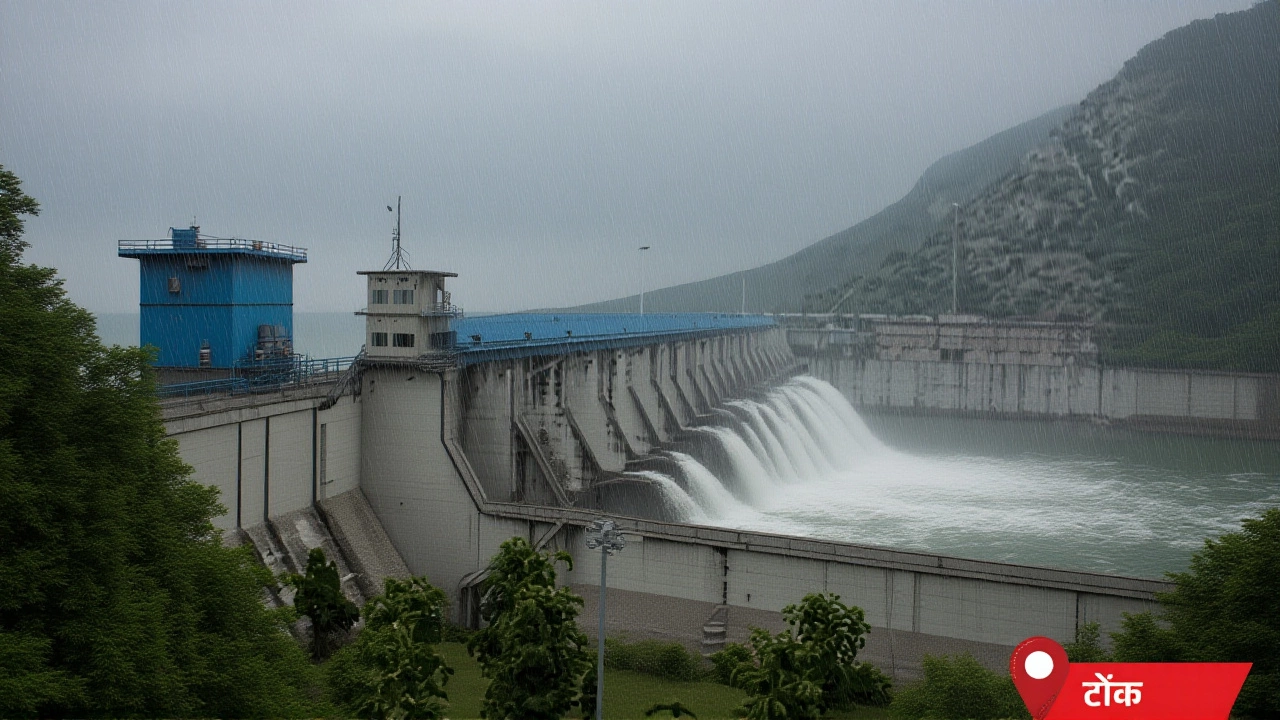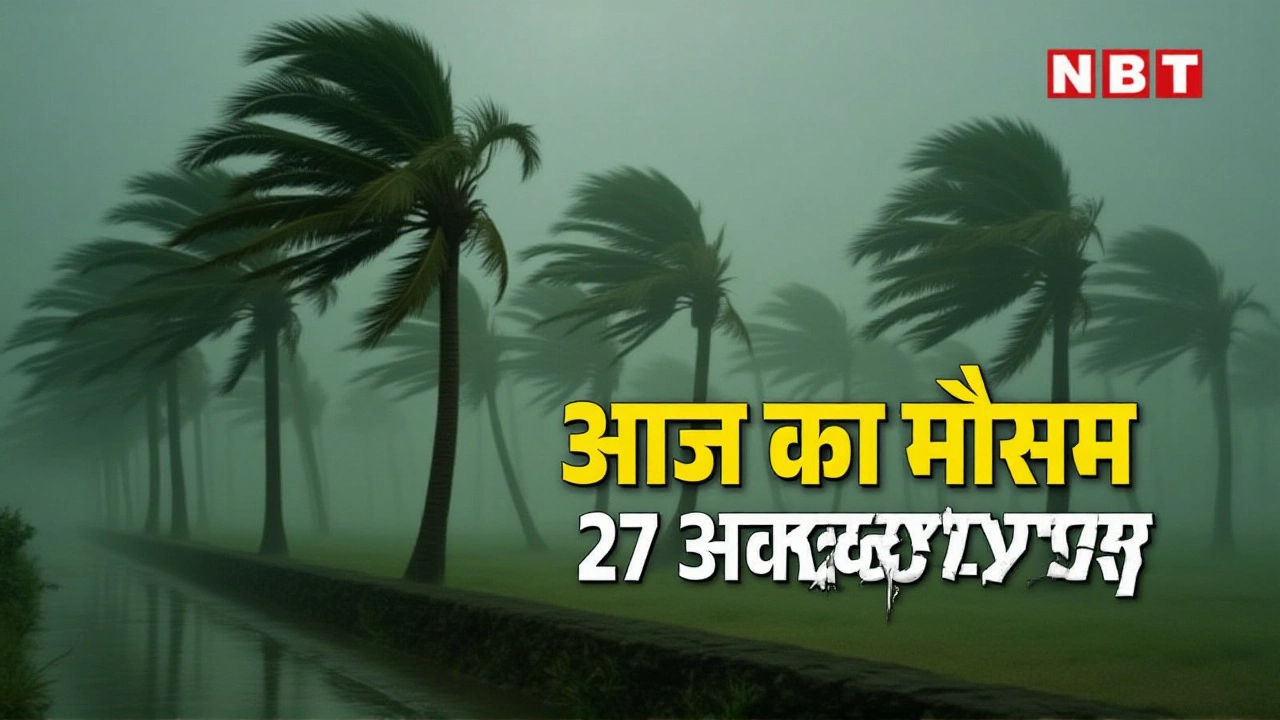What started as Cyclone Montha has now faded into a low-pressure area—but its punch hasn’t disappeared. Instead, it’s shifting north, poised to unleash heavy rains across Bihar and Uttar Pradesh starting October 30, according to official forecasts. The Patna Meteorological Centre, the regional arm of India’s Meteorological Department, issued a formal alert warning of intense showers and gusty winds in multiple districts of Bihar, with the state’s capital, Patna, at the center of monitoring efforts. Even as the storm lost its cyclonic structure, its moisture-laden core is now acting like a slow-moving monsoon engine, soaking one of India’s most densely populated regions just as farmers are harvesting kharif crops and families are preparing for Diwali preparations.
25 Cities in Bihar Under Heavy Rain Alert
While The Statesman reported broadly on districts in Bihar facing heavy rainfall, Patrika, a major Hindi-language daily, added critical precision: 25 cities in Bihar are officially under alert. That’s not a guess—it’s a government-issued designation. The names of these cities weren’t listed publicly, but local officials confirm they include major urban centers like Gaya, Muzaffarpur, Bhagalpur, and Darbhanga, all known for flood-prone river basins. The Patna Meteorological Centre’s advisory, issued late Tuesday, emphasized that rainfall could exceed 100 mm in 24 hours in some areas, enough to trigger urban flooding and disrupt road networks. Gusts of up to 50 km/h are expected, snapping weak tree limbs and knocking down temporary structures. In rural pockets, where drainage is minimal, even 50 mm of rain can turn fields into swamps and isolate villages for days.Andhra Pradesh’s Political Response
Meanwhile, in southern India, former Chief Minister YS Jagan Mohan Reddy, now president of the YSRCP (Yuvajana Sramika Rythu Congress Party), is mobilizing his party’s machinery to assess damage in Andhra Pradesh. Cyclone Montha first made landfall near Kakinada on October 26, bringing down power lines, flooding coastal villages, and damaging over 1,200 homes, according to state disaster management reports. Though the storm weakened rapidly after landfall, its aftermath lingers. Reddy’s review meeting—scheduled for this week with all regional coordinators and district presidents—isn’t just procedural. It’s political. With state elections looming in 2025, the YSRCP is under pressure to show it can manage crises faster than its rivals. The party has already distributed emergency kits to 47 affected mandals, but Reddy’s team admits they’re still tallying crop losses, especially in rice and turmeric belts.Why This Matters for Millions
Bihar and Uttar Pradesh together are home to more than 300 million people. When heavy rains hit these states, it’s not just about inconvenience—it’s about survival. In 2023, monsoon floods in Bihar displaced over 5 million people and killed 187. This year, the government has pre-positioned 300 rescue boats and 150 teams of National Disaster Response Force (NDRF) personnel across 12 high-risk districts. But the real fear? Waterlogging in urban slums. In Patna’s Kankarbagh and Gorakhpur’s Mahanagar, homes sit barely above ground level. One night of relentless rain can mean losing everything: food stocks, documents, even children’s schoolbooks. The state governments have urged residents to avoid low-lying areas, but many have nowhere else to go.
What’s Next? The Timeline Unfolds
The meteorological clock is ticking. October 30 is the official start date for the heaviest rainfall in Bihar and eastern UP. By November 1, the low-pressure system is expected to drift toward Nepal and Bangladesh, but not before leaving behind saturated soil and swollen rivers. The Ganges and its tributaries—already carrying monsoon runoff—are expected to rise another 1-2 meters in key stretches. The Indian Meteorological Department has already warned of possible riverbank erosion near Varanasi and Patna. Meanwhile, YSRCP’s review meeting in Andhra Pradesh is expected to conclude by November 2, with a public damage assessment report likely to follow. What’s not yet clear: whether the central government will declare a state of calamity in Bihar or release additional relief funds.Historical Context: Why This Storm Isn’t Unusual
Cyclones forming in the Bay of Bengal aren’t rare. October is peak season. In 2020, Cyclone Amphan devastated West Bengal and Bangladesh. In 2021, Cyclone Tauktae hit Gujarat. Montha is smaller than both, but its timing is brutal. Farmers in Bihar just finished harvesting paddy. If the rains come too hard, they’ll lose their last income before winter. Schools in UP are set to reopen after Diwali break on November 5. If roads are washed out, thousands of children won’t make it back. And then there’s the electricity grid—already strained by monsoon damage. In 2022, Bihar lost 70% of its distribution network during a single storm. This year, the state’s power department says it’s better prepared, but only because it had no choice.Frequently Asked Questions
How many districts in Bihar are affected by the heavy rain alert?
The Patna Meteorological Centre hasn’t named exact districts, but state disaster officials confirm 12 districts are under maximum alert: Patna, Gaya, Bhagalpur, Munger, Madhubani, Darbhanga, Muzaffarpur, Sitamarhi, Saharsa, Supaul, Araria, and Kishanganj. These are all along the Ganges floodplain or near major tributaries. An additional 8 districts are under yellow alert for moderate rainfall.
Why is YS Jagan Mohan Reddy involved if the cyclone hit Andhra Pradesh?
Though Cyclone Montha weakened quickly after landfall, it caused significant damage to coastal infrastructure and agriculture in Andhra Pradesh. As president of YSRCP, Reddy is leading a party-led damage assessment to prepare for political accountability. His team is documenting losses to help secure central relief funds and to contrast the party’s response with that of the ruling BJP in the state.
What’s the risk of river flooding in Bihar?
The Ganges and its tributaries like the Kosi and Gandak are already near capacity due to upstream monsoon runoff. Forecasts suggest water levels could rise another 1.5 meters in the next 72 hours, especially near Patna and Bhagalpur. Authorities have evacuated 37 low-lying villages and are monitoring 14 embankments for breaches. The last major breach in Bihar was in 2017 near Supaul, which submerged 200 villages.
Are schools and businesses closing in Bihar?
As of now, no statewide closure has been ordered. But individual district administrations in high-risk zones like Gaya and Muzaffarpur have suspended school activities from October 30 to November 2. Private businesses are advised to close early on the 30th. Public transport, including trains and buses, is already being rerouted around flood-prone routes near the Kosi River.
How does this compare to last year’s monsoon in Bihar?
Last year, Bihar received 18% more rainfall than average, leading to 142 deaths and over ₹1,800 crore in damages. This year’s rainfall so far is 9% below average, but the concentrated downpour from Montha’s remnants could undo that balance. The difference? This storm is localized and intense, not widespread. That makes it harder to predict but potentially more destructive in pockets.
What should residents do right now?
Keep emergency supplies: bottled water, non-perishable food, flashlights, and batteries. Avoid walking or driving through flooded areas—just 15 cm of moving water can sweep away a car. Charge phones and keep emergency numbers handy: Bihar State Disaster Management Authority (1070) and NDRF helpline (1077). Stay tuned to local radio broadcasts, as mobile networks may fail during heavy rain.
